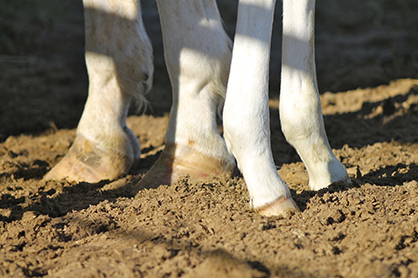The Achilles Heel- Fixing Fetlock Injuries in Horses
AVA release
Fixing fetlock injuries in racehorses
For Thoroughbred racehorses, repetitive stress injuries are common and not only limit the performance of the animal, but they can also lead to serious and career-ending fractures.
Hosted by Equine Veterinarians Australia (EVA), the Bain Fallon Memorial Lectures are part of the Australian Veterinary Association’s Knowledge Program. Currently taking place on the Gold Coast, Professor Dean Richardson today discussed the signs, diagnosis and management of repetitive stress injuries in the racehorse.
“In my experience, it is without question that repetitive stress injuries of the bone are the single most important problem in racehorses. The fetlock or Achilles heel of the racehorse is a high-impact area. When a horse runs at full speed, the bones in this area are placed under enormous strain, and it’s common for horses to experience pain or injuries, which tend to be more intense in the forelimb, but very similar damage is also seen in the hind fetlocks.”
“The signs of repetitive stress injury are quite broad. Although many horses appear obviously lame in one limb, this is a disorder that commonly afflicts two, three, or four fetlocks. As a result, trainers or jockeys often describe the horse as simply ‘moving poorly,’ and general observations give the impression that the horse just looks uncomfortable and stiff, not necessarily lame,” Professor Richardson said.
Physical signs of injuries in the fetlock such as heat, swelling, or elicited pain are unreliable when making a diagnosis. Bone scans remain the single most valuable diagnostic tool to identify stress-related bone injury because it is sensitive, potentially assesses the entire skeleton and does not require general anaesthesia. Three-dimensional imaging is unequivocally the future for early diagnosis of stress related injuries. Magnetic resonance imaging is useful in identifying varying types of damage to the bone but it is more expensive, and much more time consuming than computed tomography (CT). With the advent of standing CT over the next ten years, we expect to be able to predict horses at the most risk for catastrophic fracture.”
“The best treatment for repetitive stress injuries in the fetlock depends on a few key factors including the specific nature of the lesion, the horse’s health history, and the intended use of the animal. Management can range from simply sending a horse to a farm with where it can exercise in a large paddock to surgery if the area has sustained a fracture.”
“Rest is always a consideration, but by ‘rest’ I mean a break from race training. Very few stress related injuries of the fetlock require strict rest in the form of confinement, but a veterinarian will be able to advise on a case by case basis what’s in the best interests of the horse,” Professor Richardson said.
EVA’s Bain Fallon Memorial Lectures is being held at the Royal Pines Resort on the Gold Coast, 9-13 July 2017.











